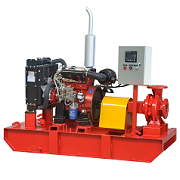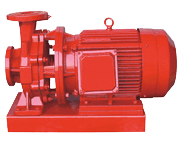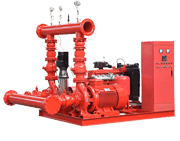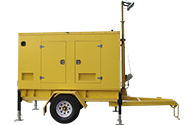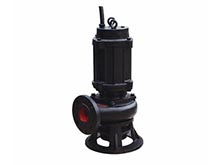Submersible pump application advantages - ZJBetter
2019-09-11
Submersible pumps are mechatronic high-tech products. In recent years, due to the rapid progress of submersible pumps in sealing, insulation, cooling and monitoring technologies, the automatic coupling of pumps and outlet pipes has been successfully realized, so that the promotion and application speed of large-caliber submersible pumps has been significantly accelerated. Because the submersible pump station saves engineering investment, can be quickly installed and overhauled, the operating conditions are greatly improved, and the reliability and service life of the equipment are significantly improved. At present, we not only produces and installs axial flow pumps and mixed flow pumps with a large diameter of 900mm or less, but also can produce large-scale submersible electric pumps with calibers of 1.4m and 1.6m, which lays a good foundation for the technical promotion of submersible electric pumping stations. The submersible pump is not afraid of flooding, and has the advantages of quick maneuverability such as rapid dismantling and installation. It can cope with various emergencies such as water level surge and pump room flooding. The advent of large-scale submersible pumps makes the pump station structure type and installation way, the operating environment, and so on have undergone revolutionary changes. Compared with conventional pumping stations, the advantages of submersible electric pump stations in the low-lying areas are more obvious. At the same time, there are a variety of pump types such as submersible sewage pump and sand pump, which can clear the drainage channel in time.
1. The pumping station is not afraid of flooding
For the low-lying areas, the drainage pumping stations are often flooded in the case of dike breaches or excessive heavy rains. Once the electromechanical equipment of the pumping station is soaked in water, the repairing work such as cleaning and baking is very large, which will delay the drainage time and increase the disaster loss. Therefore, the flood control and moisture protection of the conventional pumping station itself is also one of the most important issues. However, the submersible pump uses a submersible motor, which can be operated underwater. Therefore, even if the pump station is flooded, as long as the motor is not overloaded, the pump can work in the stable zone and the submersible pump can be put into operation at any time.
2. Unit disassembly and assembly is fast
In the past, submersible pumps and outlet pipes were bolted and used mainly for deep well water lifting and small construction drainage. However, the automatic coupling between the submersible pump and the outlet pipe has been realized. When the outlet pipe is fixed, the pump unit can be quickly installed and disassembled without bolts, thereby greatly speeding up the installation and maintenance speed of the unit. The main installation types of submersible pumps are mobile and rail-coupled.
3. Saving pump station project investment
Pump station project investment includes civil construction investment and equipment investment. With the use of submersible pumps, both civil investment and equipment investment can be reduced.
a. Civil construction investment. Due to the following reasons, the civil construction investment of the submersible pumping station is 30% to 50% lower than that of the conventional pumping station.
① Submersible pump unit can be operated underwater, not afraid of wind and rain, can save the upper structure of the pump room;
② The pump of the submersible pump is coaxial, the axial dimension is small, and the lifting height of the pump is small. Even if the superstructure needs to be built, its height is lower than that of the conventional pumping station;
③ For the pump station that needs the standby unit, only the standby submersible pump unit is needed, and the position of the standby unit is not required, so that the length of the pump room can be reduced;
④ Submersible pumping station does not need auxiliary equipment such as water supply pump, drain pump, vacuum pump, fan, etc. The pumping area is small and the hydraulic structure is simple.
b. Equipment investment. Due to the high requirements for sealing, insulation and cooling of the submersible pump, there are many monitoring equipments in the unit, so the cost of the submersible pump itself is usually higher than that of the conventional unit. However, because the submersible pump can save a lot of auxiliary equipment, the equipment investment of the submersible pumping station is still lower than that of the conventional pumping station. 4. High reliability and long service life
Compared with conventional pumping station equipment, the submersible pump has fewer auxiliary equipment, which not only simplifies the operation procedure, but also facilitates automation, and can greatly reduce the probability of failure, so that the reliability of the equipment is significantly improved. At the same time, because the modern sealing, insulation, cooling and other technologies have developed rapidly, the submersible pump is not prone to failure. Even if there are seal leakage, excessive temperature rise, and insulation degradation, various sensors will transmit the signal in time and control and protect it. Therefore, the submersible pump has high reliability.
In addition, since the submersible pump is easy to install and disassemble, it can be lifted during the non-operating season, which greatly improves the management conditions of the unit, thereby extending the service life of the long pump unit.

